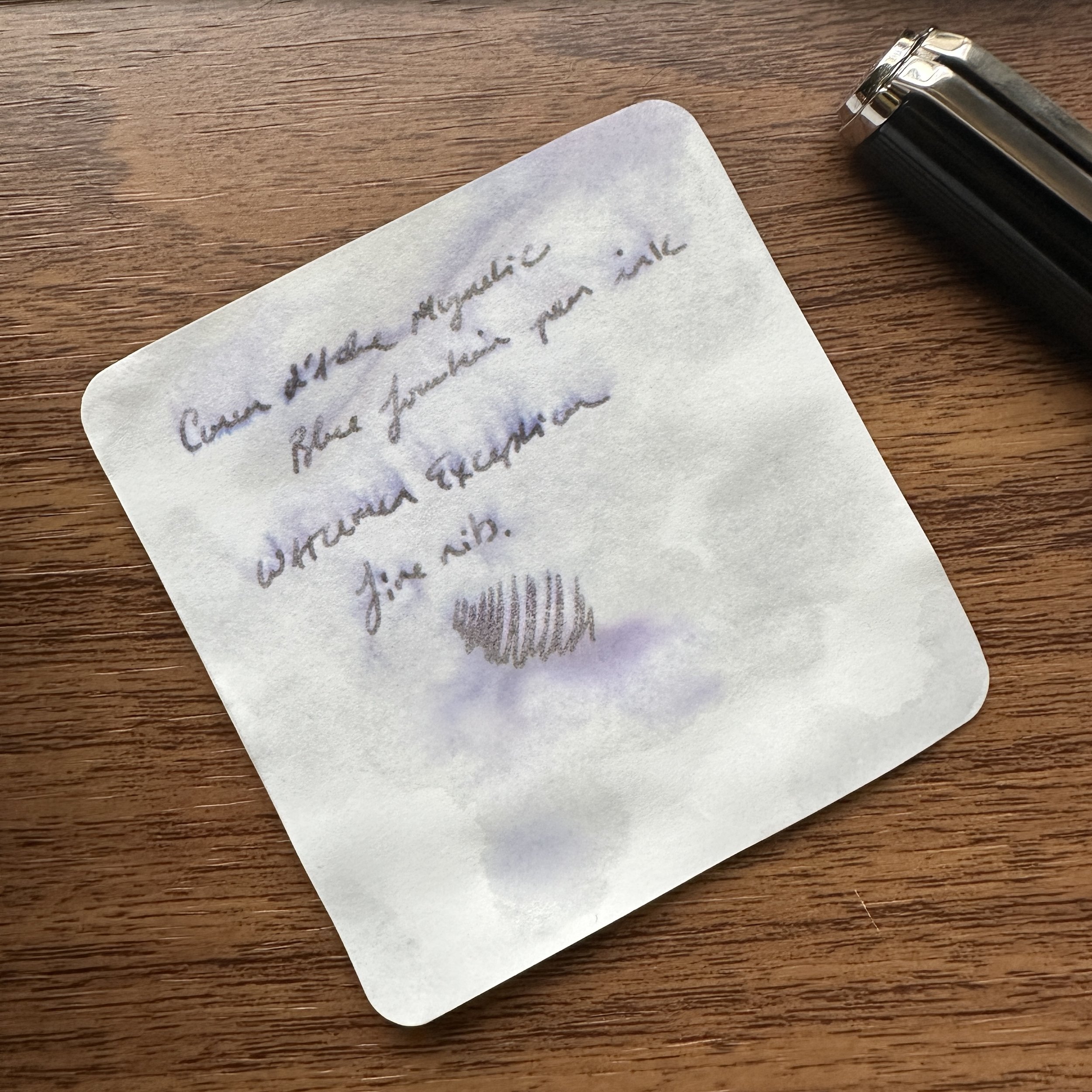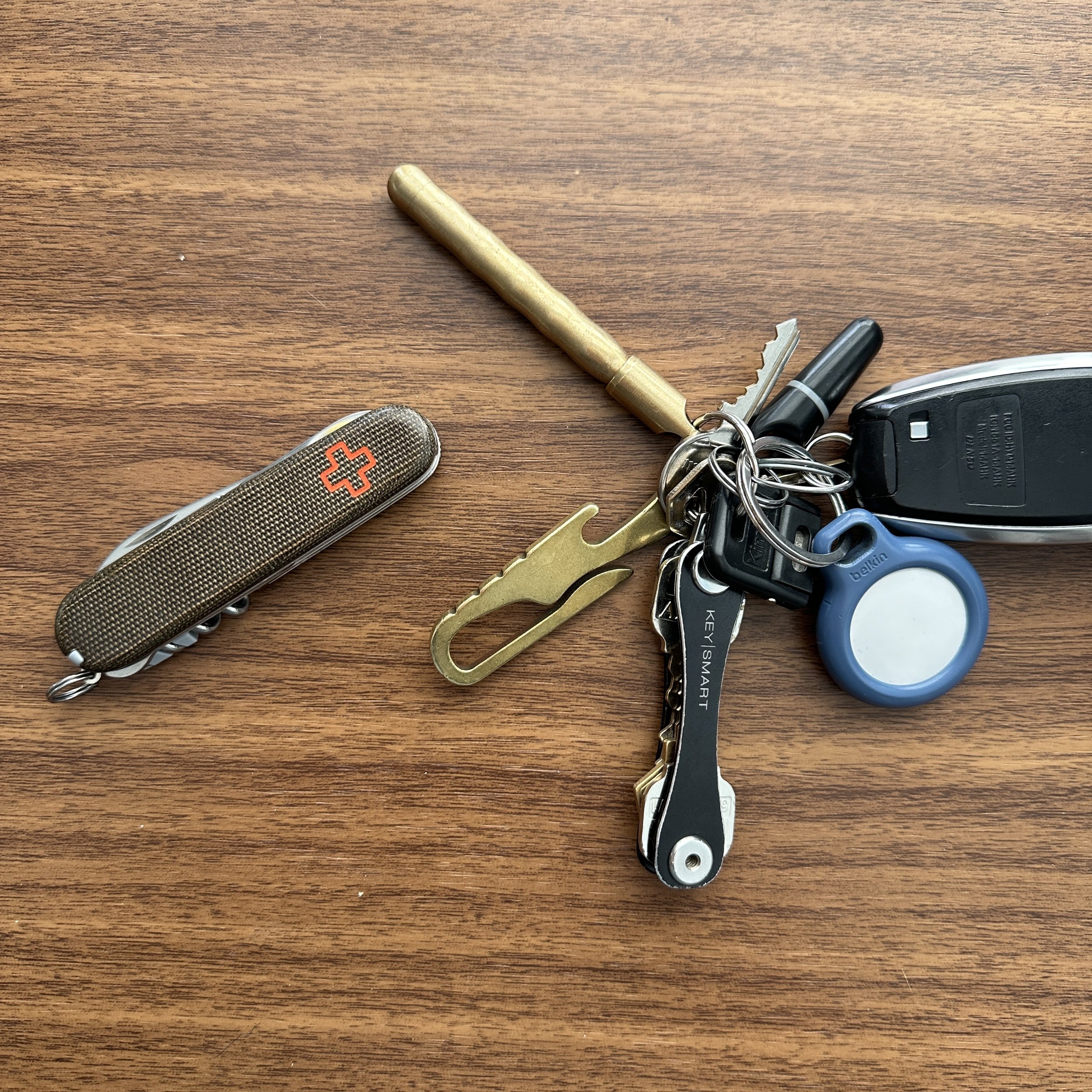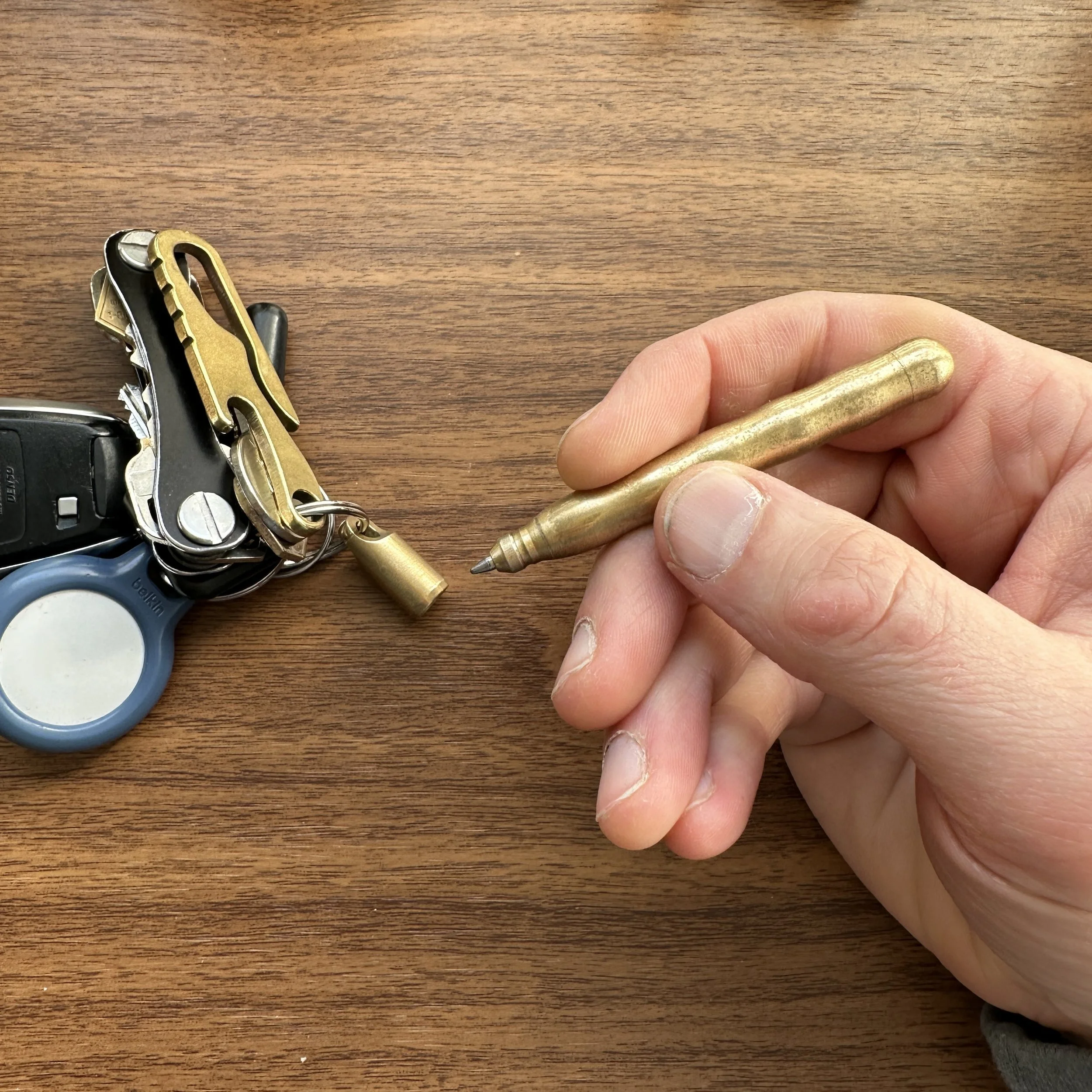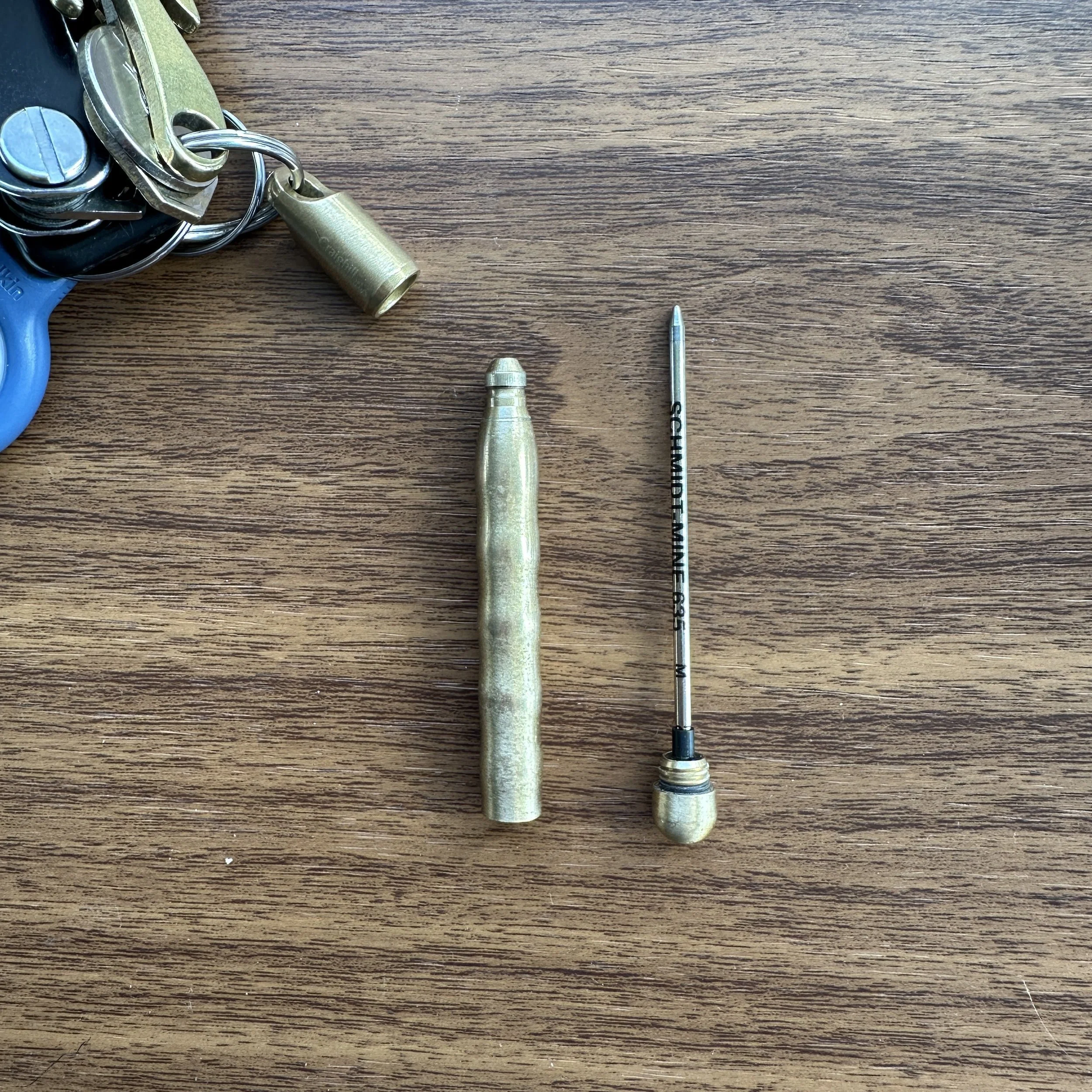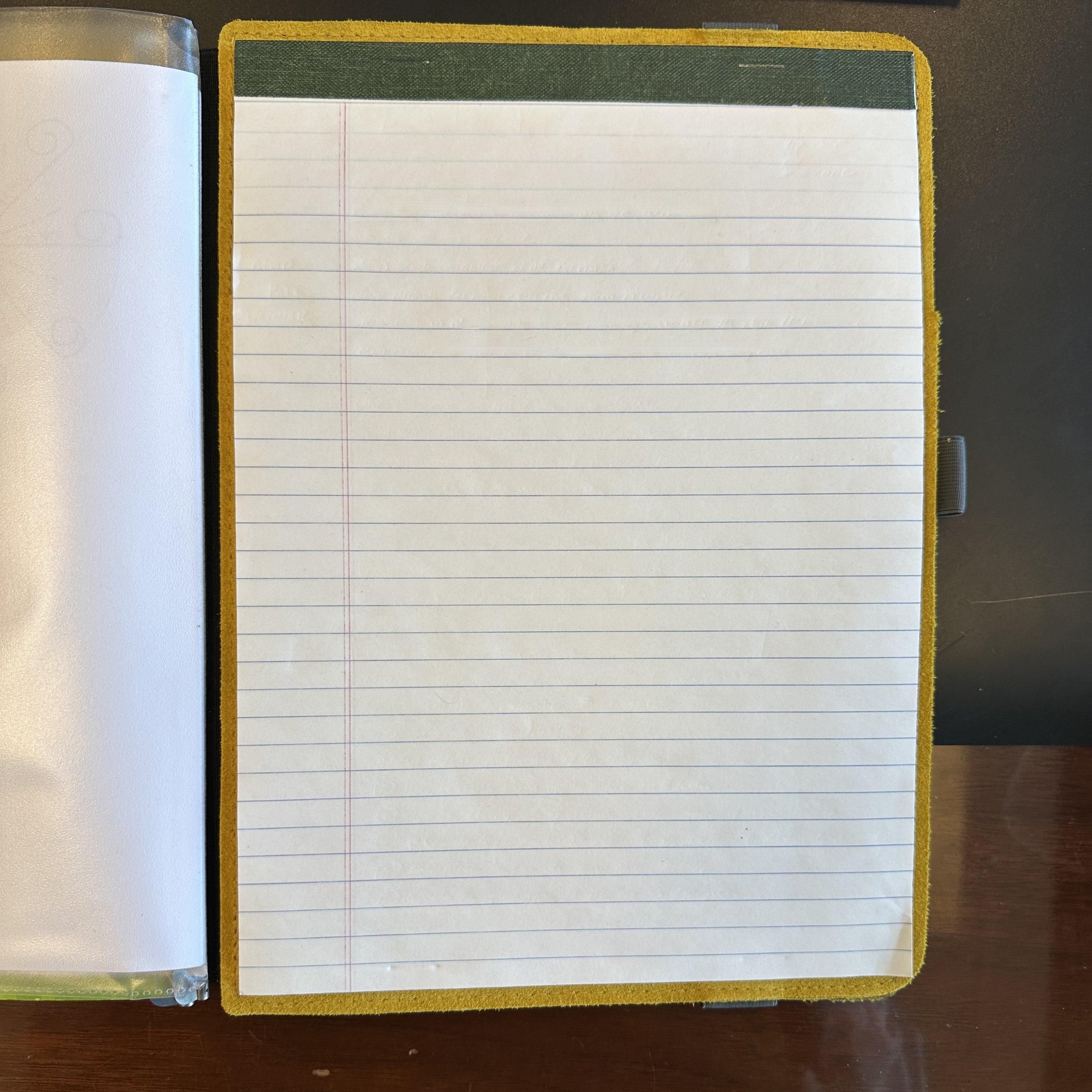Whenever I get asked about permanent inks, it's typically a question from an artist or an attorney. Many artists enjoy inks that allow them to draw a dark line and then wash over it with ink or watercolors (or both), whereas the attorneys are typically concerned about permanence of a signature on a legal document and preservation of work product.
This writing sample shown above was soaked for approximately 20 minutes in a sink full of water. This is the result. The paper wrinkled and started to fall apart more than the ink bled.
So what are my recommendations? While I'm not an artist, nearly all of my artist friends recommend Platinum Carbon Black as a drawing and sketching ink of choice. Carbon Black is a pigment ink, similar to other inks such as Sailor Kiwa-Guro "Nano Black", Noodler's Bulletproof Black, Tom's Studio Pigment Black, among others. These inks are formulated differently than most fountain pen inks, in that they rely on pigments that dry quickly and bond to the paper rather than water-based dye, and therefore have very fine particles that can potentially clog your pen if left to dry out. That's not to say they are "unsafe" - these inks are very much intended for use in fountain pens, but they do require periodic maintenance in the form of a thorough cleaning, especially when changing ink colors. The upside? I can say that these inks are absolutely "waterproof," not just water-resistant. (In addition to the photograph shown here, I posted a short video to YouTube demonstrating how I soaked this piece of paper in standing water and how the ink barely moved at all.) And if the ink does end up drying out and clogging your pen, a simple flush with water should fix the issue.
Water-resistant, but not waterproof: Caran d’Ache Magnetic Blue, a blue-black that was also soaked in the sink for the same amount of time.
For attorneys - and speaking as one myself - I would say that you have a bit more leeway. If you need absolute permanence (i.e., for a signature on a contract), you can of course use a pigmented ink or a ballpoint. But if what you're concerned about is preserving handwritten notes or marked-up documents, or simply avoiding losing work product due to spilled water or coffee, there are other suitable options to serve that more limited purpose. For example, certain blue-black inks such as Pilot Blue-Black, TWSBI Blue-Black, Pelikan Blue-Black, Caran d'Ache Magnetic Blue, etc., are highly water-resistant to the point that most writing will survive a simple spill, especially one that is cleaned up quickly. Similarly, any ink that contains iron-gall will have high water-resistance, including the line of Platinum "Classic" inks. (As with pigmented inks, you should clean your pen thoroughly to avoid mixing iron gall inks with standard fountain pen inks, which could result in clogs.)
Though pigmented black inks and blue-black inks with iron-gall content get the most attention (probably because they have been around the longest), companies do make other colors of permanent inks. Shown here are Platinum Pigment Blue cartridges (which we carry in our shop), and other options include the Kakimori pigment inks, Noodler’s “Bulletproof” inks, and Sailor Storia line, which come in a wide array of colors.
I personally don't worry much about permanence with fountain pen inks. In nearly 20 years of using fountain pens, I can count on one hand the number of times I've completely lost a piece of writing due to a spill, none of which ended up being of any importance. That said, I will regularly use low-viscosity ballpoints such as the Uni Jetstream whenever permanence could be at issue. You can even use pencil, which is both water and fade-resistant, though documents that must be permanent for legal reasons generally require ink.
Do you have a favorite permanent or water-resistant ink? Drop a comment!
The Gentleman Stationer is supported entirely by purchases from the T.G.S. Curated Shop and pledges via the T.G.S. Patreon Program. If you enjoy our content, please consider supporting us directly!
